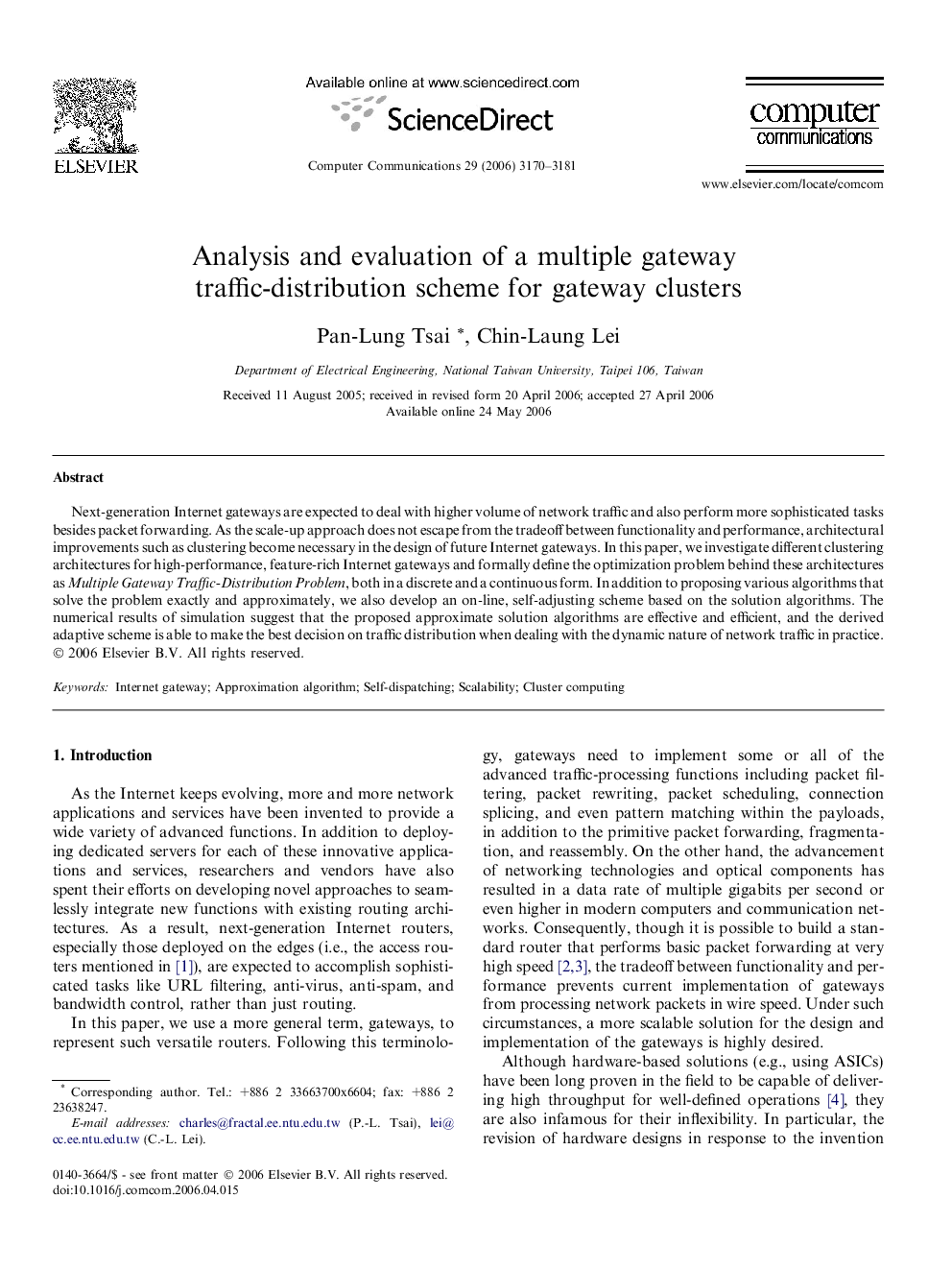| Article ID | Journal | Published Year | Pages | File Type |
|---|---|---|---|---|
| 448721 | Computer Communications | 2006 | 12 Pages |
Next-generation Internet gateways are expected to deal with higher volume of network traffic and also perform more sophisticated tasks besides packet forwarding. As the scale-up approach does not escape from the tradeoff between functionality and performance, architectural improvements such as clustering become necessary in the design of future Internet gateways. In this paper, we investigate different clustering architectures for high-performance, feature-rich Internet gateways and formally define the optimization problem behind these architectures as Multiple Gateway Traffic-Distribution Problem, both in a discrete and a continuous form. In addition to proposing various algorithms that solve the problem exactly and approximately, we also develop an on-line, self-adjusting scheme based on the solution algorithms. The numerical results of simulation suggest that the proposed approximate solution algorithms are effective and efficient, and the derived adaptive scheme is able to make the best decision on traffic distribution when dealing with the dynamic nature of network traffic in practice.
